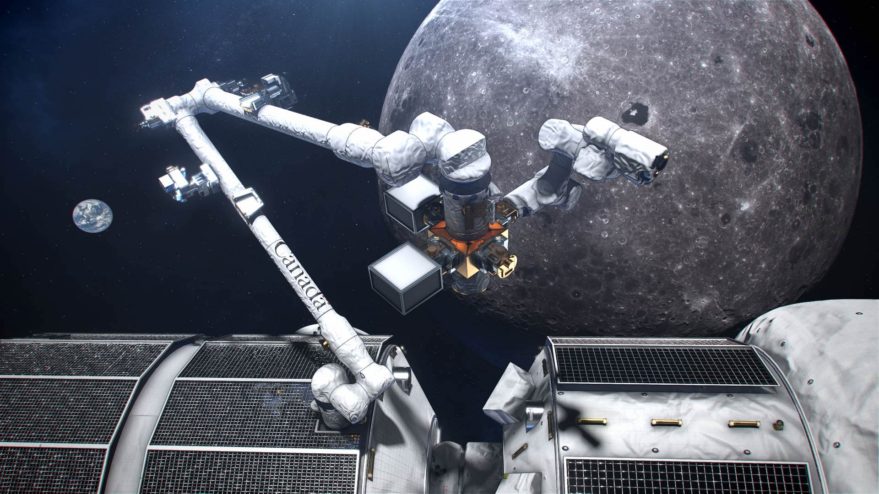
WASHINGTON – NASA and the Canadian Space Agency (CSA) have reached an agreement on Canada’s participation in the Artemis program, which will include flying a Canadian astronaut on a mission around the moon in 2023.
The agreement, announced by the two agencies on December 16, confirms that Canada will provide the Canadarm3 robotic arm for the Lunar Gateway. It also provides interfaces for Gateway modules so that the arm can move along the outside of the Gateway to install loads and perform maintenance.
A commercial logistics spacecraft will deliver Canadarm3 to the Lunar Gateway in 2026. SpaceX received a contract from NASA in March to transport cargo to the station using a version of its Dragon spacecraft called Dragon XL.
Canada in turn will get two seats for future Artemis missions. One of these will be on Artemis 2, the first manned flight of the Orion spacecraft, scheduled for 2023, to orbit the moon. The second is a mission to the lunar gate at a later, unspecified date.
Getting a seat on Artemis 2, expected to be the first manned out-of-Earth mission since Apollo 17 in 1972, was a particular point of pride for Canadian officials. “This makes Canada only the second country after the US to have astronauts in deep space,” said Navdeep Bains, Canada’s minister of innovation, science and industry, at a press conference announcing the NASA-CSA agreement.
Canadian officials said they have not selected which of the four current astronauts will fly on Artemis 2 or the later Gateway mission. “Canada is fortunate to have a strong corps of highly trained professional astronauts, all of whom would be excellent choices,” said CSA Chairman Lisa Campbell. A decision for Artemis 2 will be made closer to launch, but she did not provide a specific schedule.
NASA has also not issued crew assignments for Artemis 2 or later missions. The agency announced on Dec. 9 an “Artemis team” of 18 NASA astronauts who would be considered for later flight assignments. Andrea Matte, a Canadian Space Agency spokesperson, said after the press conference that the Canadian astronauts selected for those missions would then join the Artemis team.
In a statement from NASA, Administrator Jim Bridenstine noted that Canada’s commitment to the Artemis program dates back to the February 2019 announcement that it would develop Canadarm3 for the Gateway. “Canada was the first international partner to commit to moving the Gateway forward in early 2019, they signed the Artemis Accords in October and now we are pleased to formalize this lunar research partnership,” he said.
Canadian officials used the announcement to discuss progress on Canadarm3 as well. CSA awarded a contract on December 8 to MDA, the Canadian company whose space robotics experience includes the original shuttle-era Canadarm and the Canadarm2 on the International Space Station, to begin the Canadarm3 Phase A engineering studies. new arm will be similar to Canadarm2, but will include artificial intelligence technologies to support operations when no one is on the Gateway.
Canada’s four active astronauts – Jeremy Hansen, Joshua Kutryk, David Saint-Jacques and Jenni Sidey-Gibbons – spoke at the briefing and all said they were excited about the opportunity to fly on an Artemis mission. Flight options for Canadian astronauts in general are rare, as it is the smallest of the five main partners on the ISS. Of the four, only Saint-Jacques has flown into space so far.
“The International Corps here in Houston is over the moon, I’ll say that today at the prospect of these missions,” Kutryk said. “We all feel very inspired right now in a way that I hope all Canadians can feel inspired.”
Asked if he thought he would ever get the chance to go to the moon, Hansen noted that he became an astronaut in 2009, while NASA was still running the Constellation program to send humans to the moon, but that the new attempt is a “great opportunity” for Canada. “I’m excited that there will be a Canadian on Artemis 2,” he said. “We’re paving the way for Canadians to do even more things in space: eventually, hopefully , one day a Canadian on the moon and on Mars. “